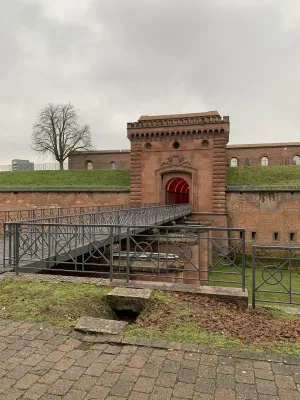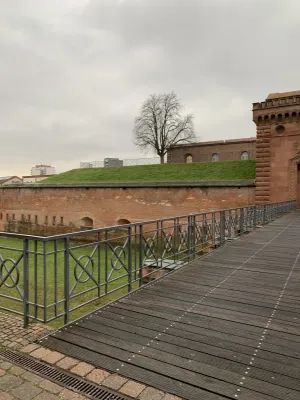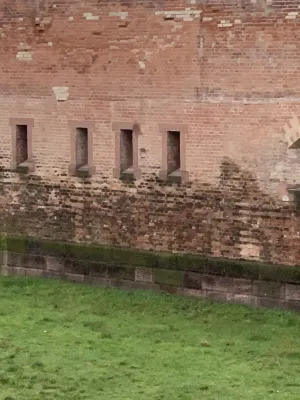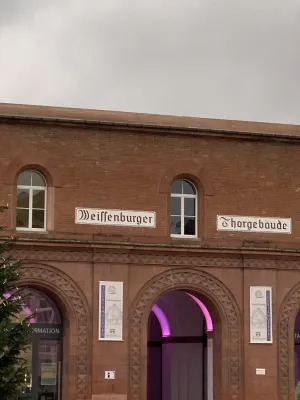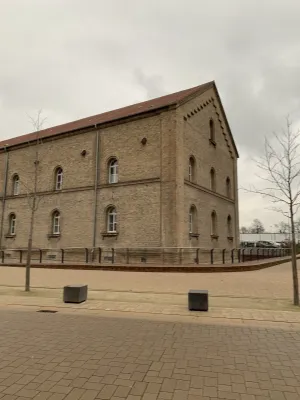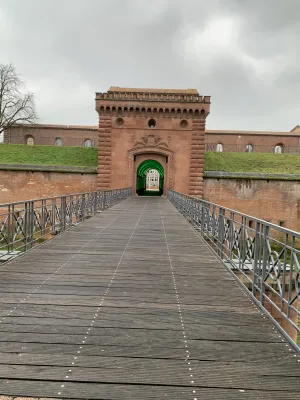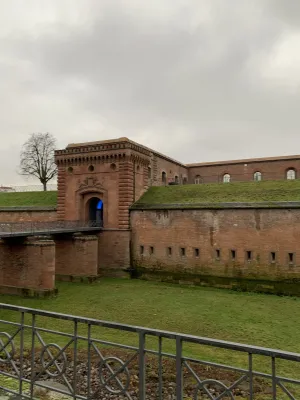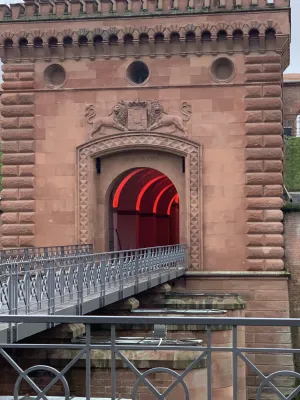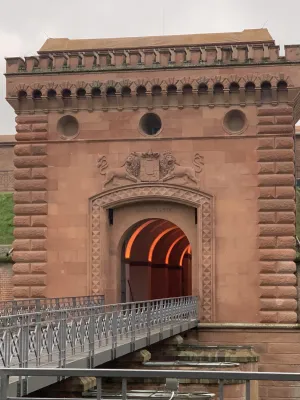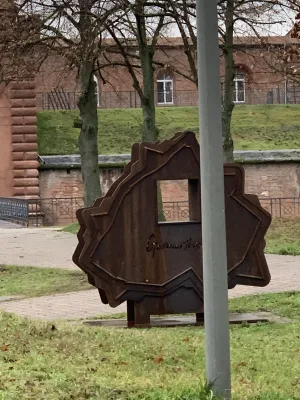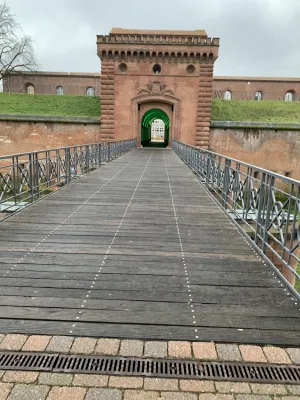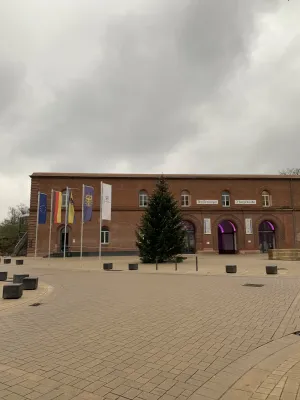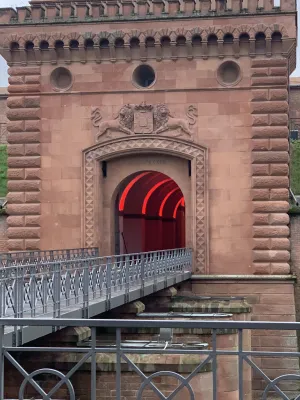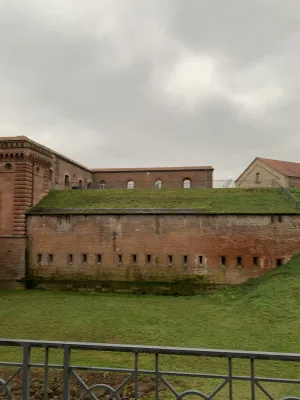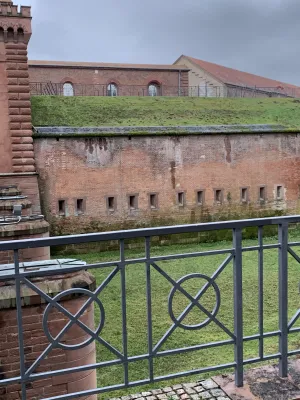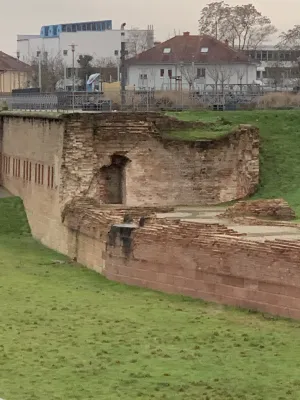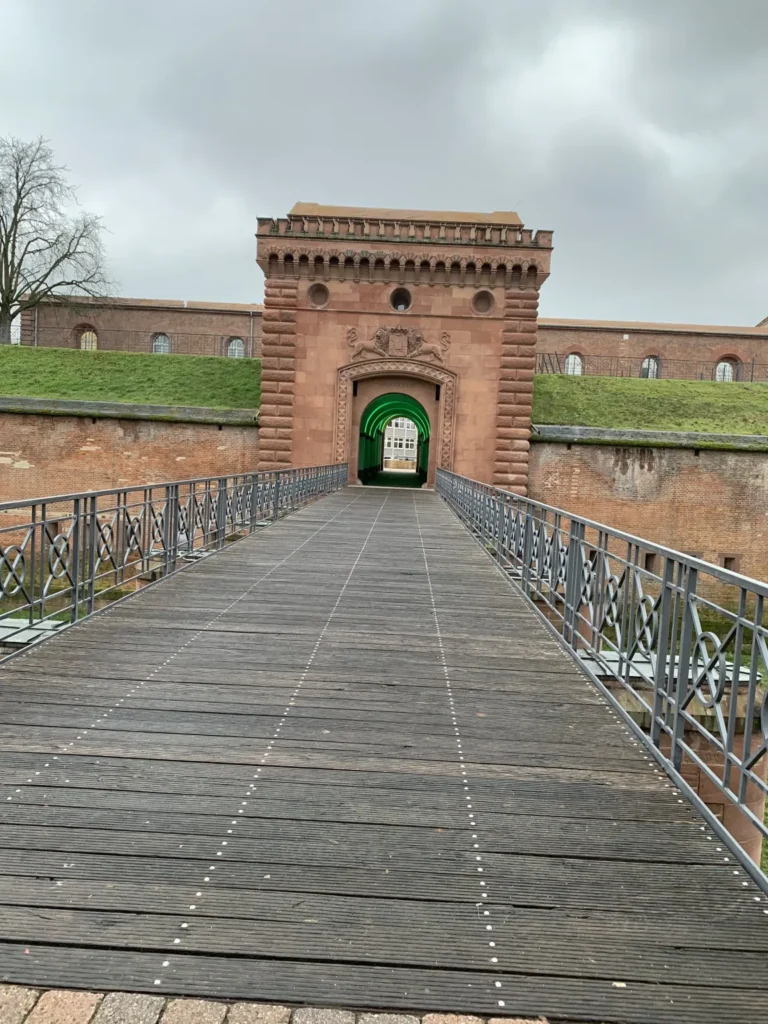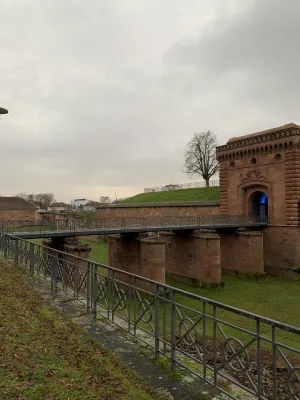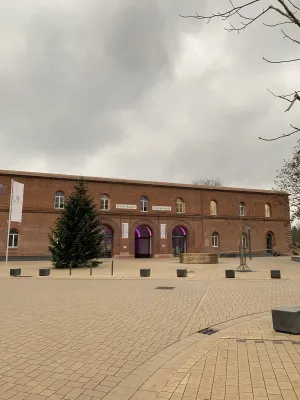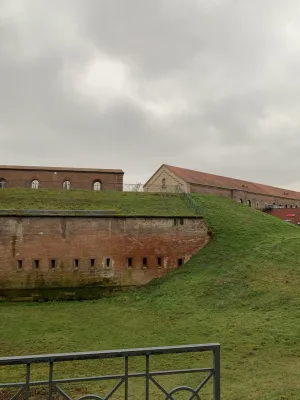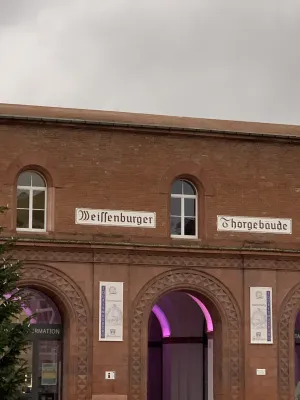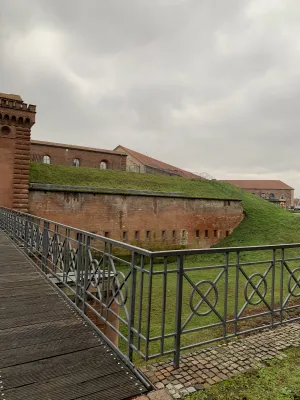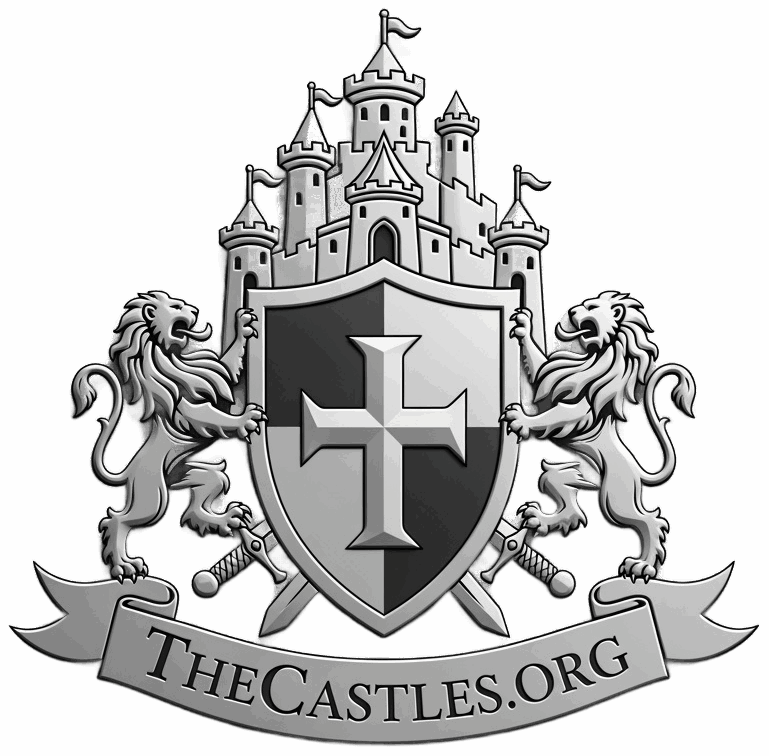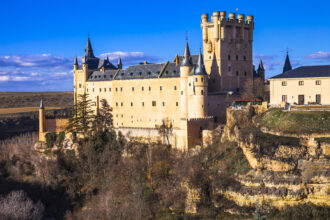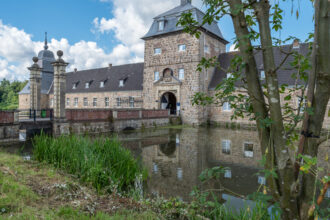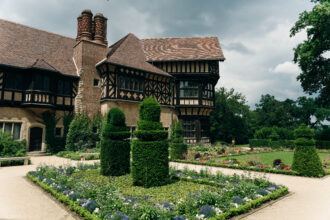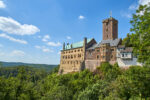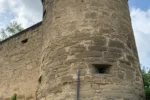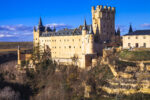The largest Bavarian fortress outside Bavaria is located in the fortified town of Germersheim in the federal state of Rhineland-Palatinate. This impressive fortress was commissioned by none other than King Ludwig I as a bulwark against the French in the style of romantic castles and was built by engineer Major Friedrich Schmauß between 1834 and 1861. One structure of this mighty fortress that still stands today, despite being demolished between 1920 and 1922 under the terms of the Treaty of Versailles, is the Weißenburger Tor gate. This gate was built in 1839 according to the plans of Munich professor Friedrich von Gärtner and served as the city gate during the fortress era. The passageway itself, with its crenellated cornice and arched frieze, as well as its bas-relief crowned by two mighty lions holding the Bavarian coat of arms, expresses the defensive strength of this fortress. The oak gate wings and the mechanism for raising the former drawbridge, which crossed a main moat that was filled with water until 1960, also testify to the defensive character of this fortification. In front of the gate was once the parade ground with a redoubt in front of it, and to the south of it the simple trench defence of the Lamotte front. Since 12 May 2013, the Weißenburger Tor has been home to the Tourism, Culture and Visitor Centre.
